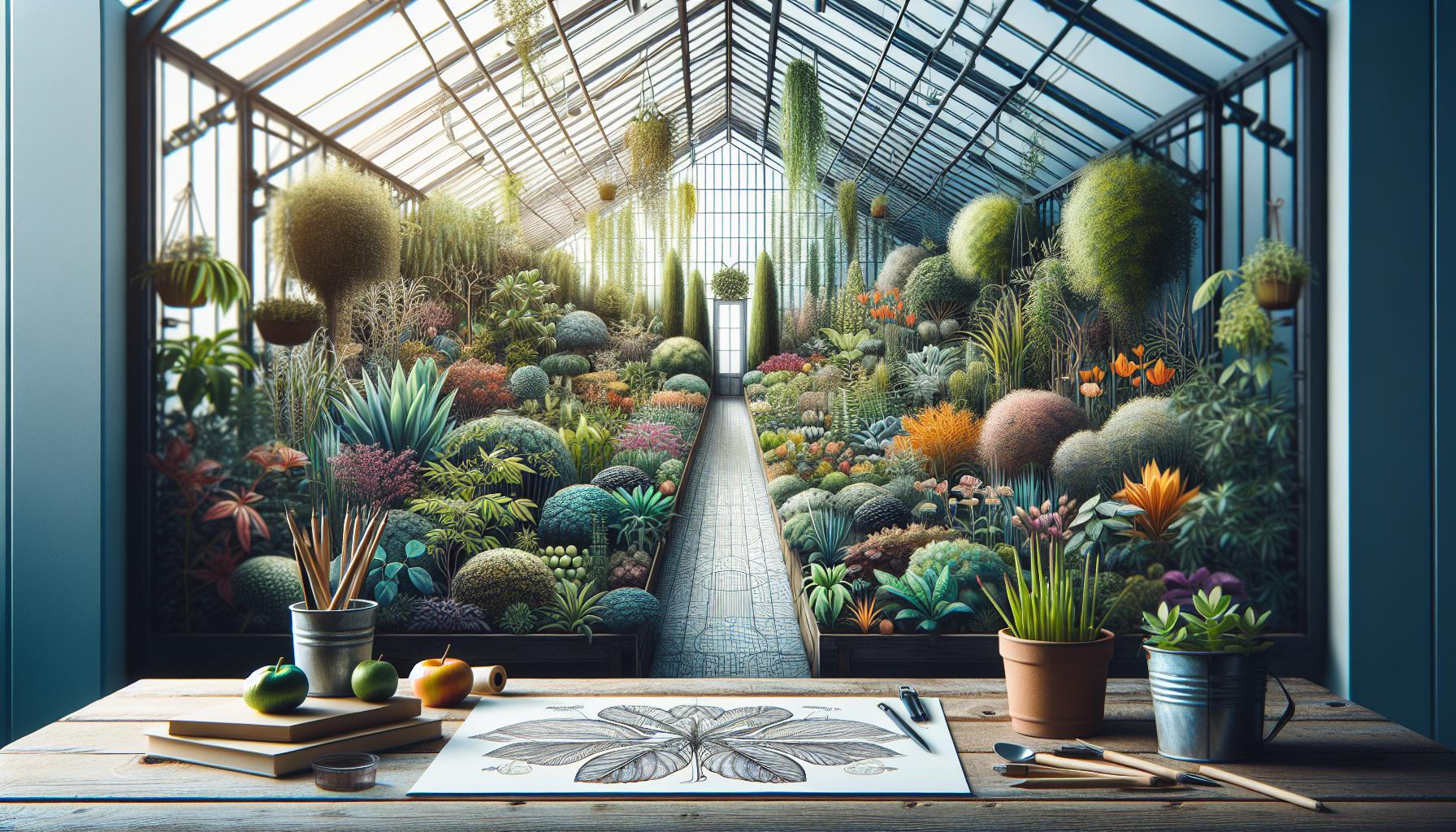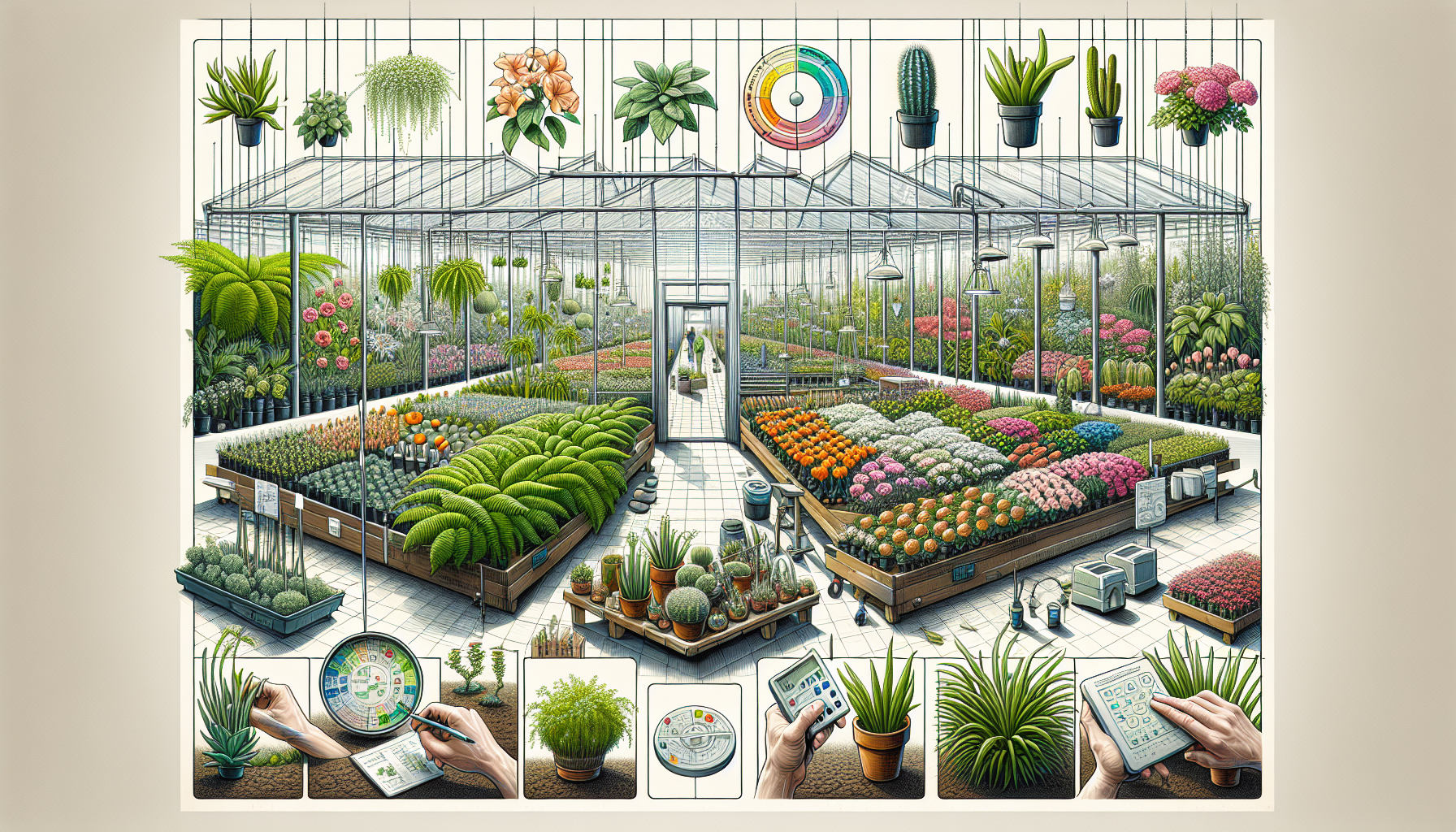
You’re embarking on a gardening journey unlike any other with “Greenhouse Gardening: A Comprehensive Guide“. In this guide, you’ll discover the art and science of horticulture under glass. This comprehensive guide offers a treasure trove of knowledge, from selecting the perfect greenhouse, understanding the role of temperature, light, humidity, and nurturing a variety of plants. Your ambition to create an eco-friendly haven for blooming orchids or growing nutritious vegetables year-round, will come to fruition with this informative guide, highlighted by ultimate greenhouse gardening books.
Understanding Greenhouse Gardening
Let’s dive into the world of greenhouse gardening. It’s a fascinating journey that begins with a clear understanding of what greenhouses are and the purpose they serve.
Definition and Purpose of a Greenhouse
A greenhouse, in its simplest form, is a structure with walls and a roof, primarily made from transparent material like glass or clear plastic, in which plants requiring regulated climatic conditions are grown. The key purpose of a greenhouse is to create an environment that allows the growth of plants outside their usual growing season. It also serves to replicate conditions which may not be naturally available in your region.
History and Evolution of Greenhouses
Your green thumb is not a new phenomenon by any means. As far back as the Roman times under Emperor Tiberius, the first prototypes of a greenhouse were used to provide the Emperor with a year-round supply of cucumbers. Since then, greenhouses have tremendously evolved from hot, steamy, glass buildings to modern, automated structures with complex systems for regulating temperature, humidity, and light.
Benefits of Greenhouse Gardening Over Traditional Gardening
Growing plants in a greenhouse has many advantages over traditional gardening. You aren’t at the mercy of the weather, able to grow plants year-round regardless of the seasonal changes. It also provides protection from pests to a large extent. Lastly, due to the controlled environment, the chance of disease is significantly decreased, leading to healthier and more productive plants.
Types of Greenhouses
While your crop’s success depends on your care, your greenhouse type plays an instrumental role too.
Traditional vs. Modern Designs
Traditional greenhouses mainly made from glass and wood have a charm to them; however, modern designs crafted from aluminum and polycarbonate provide increased durability and better technology.
Glass vs. Polycarbonate vs. Plastic Sheet Greenhouses
Glass greenhouses are classic and provide great aesthetics but can be fragile and expensive. On the other hand, polycarbonate and plastic sheet variants are more durable and affordable. Polycarbonate has the advantage of toughness and versatility while plastic sheet versions are often used for their lightweight and easy installation.
Freestanding vs. Attached Structures
Choosing between a freestanding and an attached greenhouse depends on your space availability and needs. Freestanding structures offer more growing space and flexibility, while attached structures, often called lean-to greenhouses, are more convenient and cost-effective as they use existing structures like your house or garage for support.

Planning Your Greenhouse
With understanding and types covered, let’s talk about planning your greenhouse.
Choosing the Right Location
This step is crucial. Your greenhouse should ideally be placed where it can receive maximum sunlight throughout the day, preferably oriented towards the south or southeast. Make sure there are no trees or buildings casting shadows on it.
Determining the Appropriate Size
Your greenhouse size depends purely on your gardening ambitions and available space. Remember that having just enough space may hinder your growth plans in the future, so it’s always better to opt for a little extra if possible.
Planning for Expansion and Customization
When planning, consider future expansions and your prospects of customization. It’s easier and cost-effective to build a large greenhouse than to expand a smaller one.
Greenhouse Construction and Materials
Choosing your materials right marks the beginning of a successful greenhouse gardening venture.
Selecting Durable Building Materials
It’s crucial to select durable, weather-resistant materials for your greenhouse. Opting for UV resistant polycarbonate sheets or reinforced glass can provide longevity as well as a good climate for your plants.
Foundations and Framing Techniques
A strong foundation and a robust frame are key to a sturdy greenhouse. You can opt for poured concrete, wooden planks, or even a brick foundation. Frames can be made from wood, steel, or aluminum depending on your budget and design.
Insulation and Glazing Options
Insulation is important to retain heat within the greenhouse during colder months. Using double-wall polycarbonate sheets, bubble wrap, or even thermal paints can serve this purpose. Glazing options are significant for light penetration and can vary based on your design and monetary allocation.

Climate Control and Regulation
Now, let’s delve into the intricate art of climate regulation within your greenhouse.
Understanding Ventilation Needs
The health of a greenhouse tremendously depends on appropriate ventilation. At its basic, a hinged roof window that opens and closes either manually or via a temperature-driven actuator can serve ventilation needs.
Heating Systems for Various Climates
In colder climates, heating is essential. You can use gas heaters, electric heaters, or even solar heat collectors. However, bear in mind your heating solution’s operating cost and environmental impact.
Cooling and Shading Techniques
Cooling and shading are vital during hot summers to avoid overheating. Shade cloths, evaporative coolers, and good ventilation can help keep your greenhouse temperature under control.
Irrigation and Water Management
Keeping your greenhouse plants well-hydrated is paramount.
Setting up an Efficient Watering System
Establishing an efficient watering system depends on your greenhouse size and the types of plants you will be growing. Overhead sprinklers, drip sprinklers, and ebb and flow benches are options you can explore.
Rainwater Harvesting and Reuse
Harvesting rainwater for your greenhouse not only saves water but also provides your plants with natural, untreated water. Installing a rainwater collection system is a great way to conserve water and reduce your irrigation costs.
Managing Humidity Levels
Humidity plays an integral role in a greenhouse. High amounts can lead to fungal diseases while less can result in inadequate plant growth. Having a hygrometer can help monitor your greenhouse’s humidity level, while ventilation, heaters, and humidifiers can help control it.
Soil and Nutrition
Good soil and nutrition directly influence the health and growth of your plants.
Choosing the Right Soil Mix
Greenhouses require specialized soil mixes that differ from garden soil. Look for a mix that drains well, has a stable pH and provides ample nutrients for your plants.
Fertilization and Nutrient Delivery
Marvelous growth can’t be achieved without the right nutrients. Depending on your plants, choose a balanced fertilizer that provides a good mix of nitrogen, phosphorus, and potassium.
Understanding pH and Soil Testing
pH is crucial to soil health. Most plants prefer a neutral to slightly acidic pH. Regular soil testing can ensure your soil’s pH is conducive for plant growth.
Plant Selection and Care
The crowning joy of a greenhouse gardener is the flourish of their plants.
Selecting Plants Suitable for Greenhouse Cultivation
Choosing the right plants determines your greenhouse success. Tomatoes, cucumbers, and herbs are quite popular. However, consider your interests, research, and experiment to see what thrives best in your greenhouse environment.
Planting Techniques for Optimal Growth
Different plants have different planting needs. Some might need more space, while others might require trellis support. It’s essential to understand the plant’s growth habit and life cycle before planting.
Disease Prevention and Pest Control Methods
In a humid and warm environment like a greenhouse, diseases and pests can outbreak. Regular inspections, good air circulation, use of organic insecticides, and introducing beneficial insects can prevent such issues from affecting your plants.
Greenhouse Technology and Automation
Embrace technology to make your greenhouse gardening less labor-intensive and more efficient.
Implementing Automated Control Systems
Automated control systems can monitor and regulate temperature, humidity, and light, amongst other things, in your greenhouse. These systems can be programmed to perform tasks like watering, shading, and ventilation as per your needs.
Advanced Monitoring and Sensory Equipment
Accompany automation with advanced monitoring. Utilizing sensors for moisture, temperature, and light allows you to keep conditions perfect for your plants and alerts you of any fluctuations swiftly.
Integrating Renewable Energy Solutions
Juxtapose your time-old hobby with modern renewable solutions. Investing in solar panels or wind turbines can help power your greenhouse and reduce your carbon footprint.
Greenhouse Resources and Education
Lastly, equip yourself with quality resources and knowledge about greenhouse gardening.
Finding Greenhouse Gardening Books and Literature
Numerous books and literature provide a wealth of knowledge on all things greenhouse. These offer valuable insights from seasoned gardeners and experts. Some good options to start with are “The Greenhouse Gardener’s Manual” by Roger Marshall and “The Complete Idiot’s Guide to Greenhouse Gardening” by James C. W. Arbury.
Attending Workshops and Courses
Consider attending workshops and taking courses on greenhouse gardening. Learning beyond books can offer valuable practical understanding and an opportunity to meet fellow garden enthusiasts.
Joining Community and Online Forums
Joining a community of greenhouse gardeners can be incredibly rewarding and supportive. You can exchange tips, learn from others’ experiences and even share your triumphs and trials.
Here we complete our comprehensive guide on greenhouse gardening, but your journey is just beginning. Remember, successful greenhouse gardening comes with time, practice, and patience. It’s your love affair with plants nurtured in a space you construct, maintain, and cherish. Enjoy the process and the harvest will surely follow.

